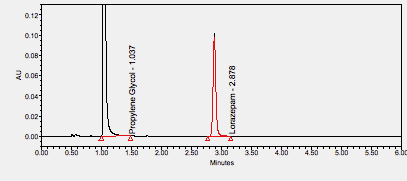Prompt Praxis Laboratories provides a full range of rapid testing and support services focusing on pharmaceutical products and compounded sterile or nonsterile preparations.
Prompt Praxis Labs helps you in designing, developing, implementing and managing an effective, safe and secure Analytical Testing Program for a Pharma Product. We offer the test methods listed below for analyzing a product’s strength, quality, purity, potency, and identity. We also provide services for analytical characterization, bioanalytical services, method development and validation, as well as method transfer and assistance.
Click on each test method to see a sample chromatogram.
Acyclovir is a medication used to manage and treat infections caused by the herpes simplex virus (HSV). It is FDA approved to treat genital herpes and HSV encephalitis. Some off-label uses include cold sores, shingles, and chickenpox. It is in the antiviral class of medications. **
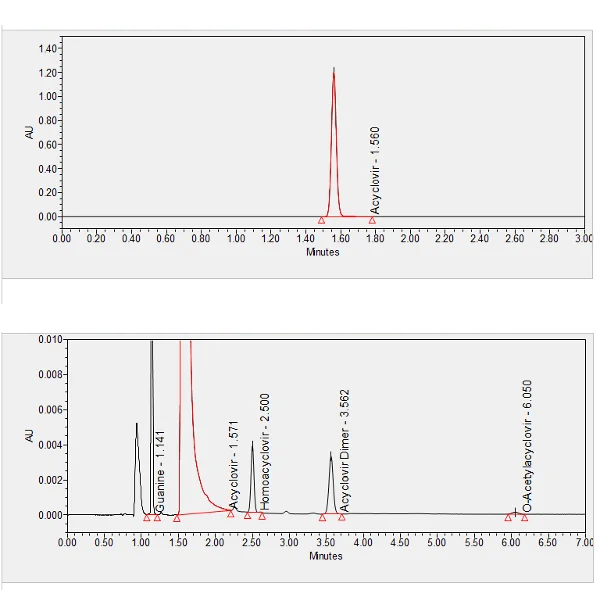
Adenosine has uses as both a diagnostic or therapeutic agent. As a diagnostic agent, adenosine can be utilized in myocardial perfusion stress imaging due to its vasodilatory effects. As a therapeutic agent, adenosine can be used due to its antiarrhythmic properties in supraventricular tachycardia (SVT). **
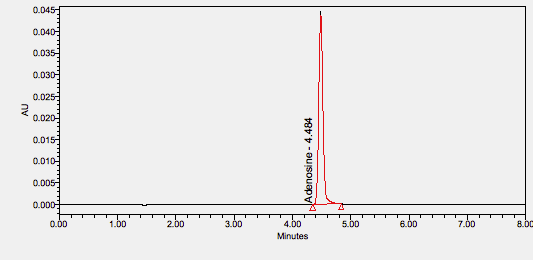
Albuterol is a medication used to treat and prevent bronchospasm in patients with reversible obstructive airway disease. It is also used to prevent exercise-induced bronchospasm. Albuterol is in the bronchodilator class of drugs and works by relaxing the muscles in the airways to improve breathing.*
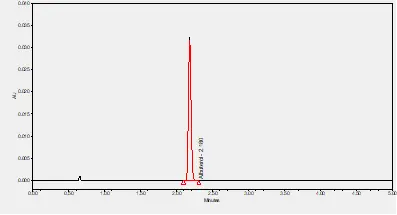
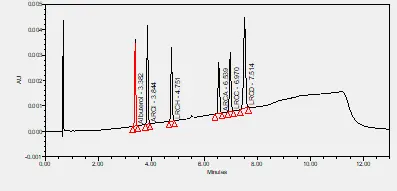
Aluminum is an element commonly used in various medical treatments, including as an adjuvant in vaccines and in antacids to reduce stomach acid. It is analyzed using Inductively Coupled Plasma Optical Emission Spectroscopy (ICP-OES).*
Amiodarone is one of the most commonly used anti-arrhythmic drugs. While the United States FDA has labeled amiodarone for the treatment of life-threatening ventricular arrhythmias, the drug is commonly used off-label to treat supraventricular tachyarrhythmias such as atrial fibrillation as well as for the prevention of ventricular tachyarrhythmias (VTs) in high-risk patients. **
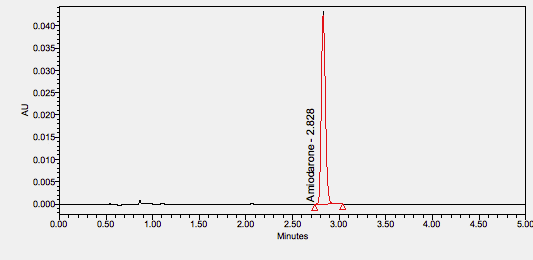
Dextroamphetamine is a central nervous system (CNS) stimulant and an amphetamine enantiomer[note 1] that is prescribed for the treatment of attention deficit hyperactivity disorder (ADHD) and narcolepsy.[1][17] It is also used as an athletic performance and cognitive enhancer, and recreationally as an aphrodisiac and euphoriant. ***
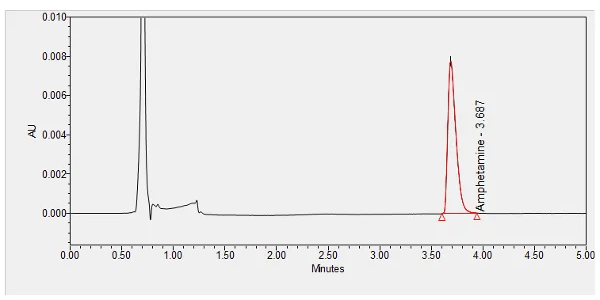
Anastrozole is a medication used to treat breast cancer in women who have gone through menopause. It works by decreasing the amount of estrogen the body makes, which helps slow or reverse the growth of breast cancers.*
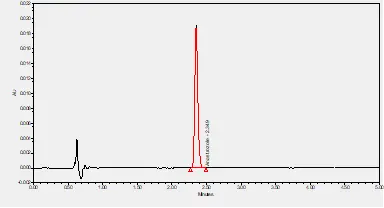
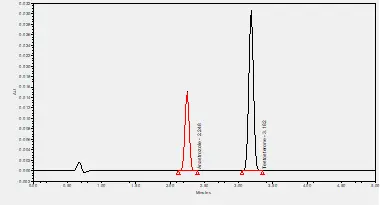
Articaine is an intermediate-potency, short-acting amide local anesthetic with a fast metabolism due to an ester group in its structure. It is effective with local infiltration or peripheral nerve block in dentistry, when administered as a spinal, epidural, ocular, or regional nerve block, or when injected intravenously for regional anesthesia. In comparative trials, its clinical effects were not generally significantly different from those of other short-acting local anesthetics like lidocaine, prilocaine, and chloroprocaine, and there is no conclusive evidence demonstrating above-average neurotoxicity. Articaine proved to be suitable and safe for procedures requiring a short duration of action in which a fast onset of anesthesia is desired, eg, dental procedures and ambulatory spinal anesthesia, in normal and in special populations.**
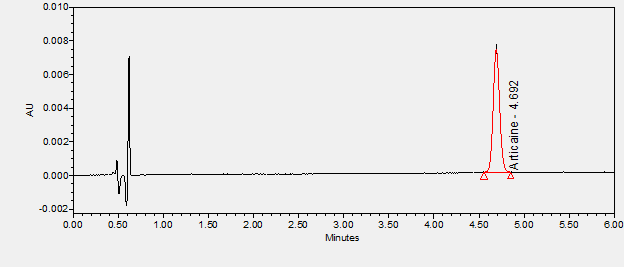
Atipamezole is a medication used to reverse the effects of certain sedatives in animals. It works by blocking the alpha-2 adrenergic receptors, which reverses sedation and analgesia caused by these drugs.*
Atropine or atropine sulfate carries FDA indications for anti-sialagogue/anti-vagal effect, organophosphate/muscarinic poisoning, and bradycardia. Atropine acts as a competitive, reversible antagonist of muscarinic receptors: an anticholinergic drug. **
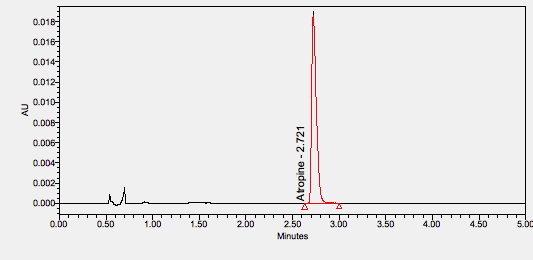
Avastin, also known as Bevacizumab, is a medication used to treat various types of cancer by inhibiting the growth of blood vessels that feed tumors. It is an angiogenesis inhibitor and is often used in combination with other cancer treatments.*
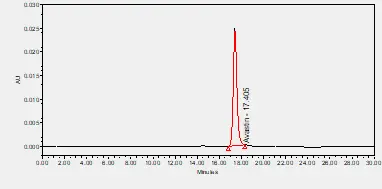

Baclofen is used to treat muscle spasticity; it is FDA-approved for managing reversible spasticity, particularly for the relief of flexor spasms, clonus, and concomitant pain, common sequelae of spinal cord lesions, and multiple sclerosis. Baclofen also has several off-label uses. **

Benzalkonium chlorides (BACs) are chemicals with widespread applications due to their broad-spectrum antimicrobial properties against bacteria, fungi, and viruses. This review provides an overview of the market for BACs, as well as regulatory measures and available data on safety, toxicity, and environmental contamination. We focus on the effect of frequent exposure of microbial communities to BACs and the potential for cross-resistant phenotypes to emerge. Toward this goal, we review BAC concentrations in consumer products, their correlation with the emergence of tolerance in microbial populations, and the associated risk potential. Our analysis suggests that the ubiquitous and frequent use of BACs in commercial products can generate selective environments that favor microbial phenotypes potentially cross-resistant to a variety of compounds. An analysis of benefits versus risks should be the guidepost for regulatory actions regarding compounds such as BACs.**
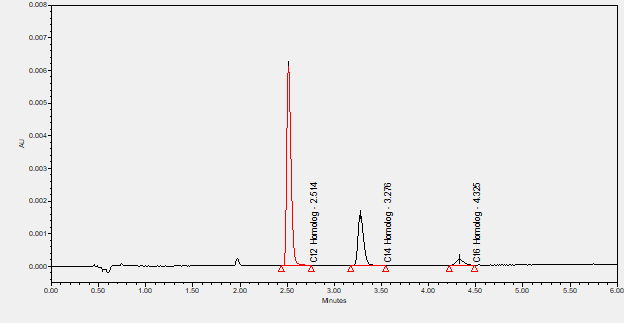
Benzethonium chloride is a (synthetic) quaternary ammonium salt that is benzyldimethylamine in which the nitrogen is quaternised by a 2-{2-[p-(2,4,4-trimethylpentan-2-yl)phenoxy]ethoxy}ethyl group, with chloride as the counter-ion. An antiseptic and disinfectant, it is active against a broad spectrum of bacteria, fungi, moulds and viruses. It has a role as an antiseptic drug, a disinfectant, an antibacterial agent, an antiviral agent and an antifungal agent. It is a quaternary ammonium salt, a chloride salt and an aromatic ether. **
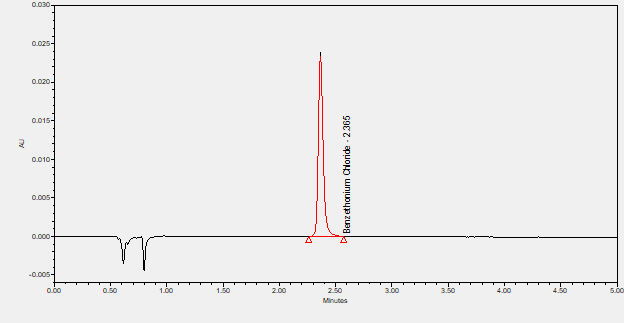
Benzyl alcohol appears as a clear colorless liquid with a pleasant odor. Slightly denser than water. Flash point 194°F. Boiling point 401°F. Contact may irritate skin, eyes, and mucous membranes. May be slightly toxic by ingestion. Used to make other chemicals.**
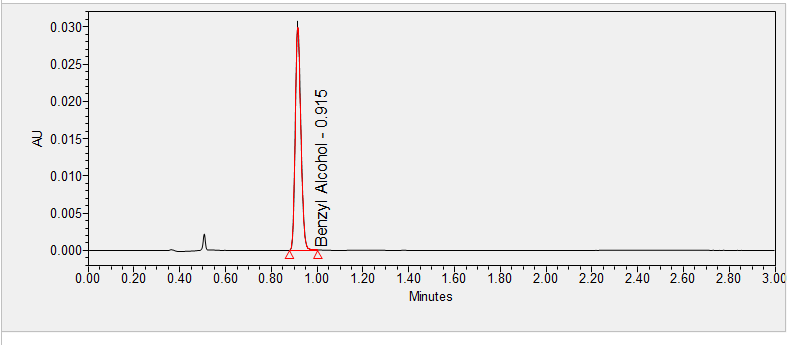
Bevacizumab is used to treat a certain type of brain tumor, and certain types of cancers of the kidney, liver, lung, colon, rectum, cervix, ovary, or fallopian tube. Bevacizumab is also used to treat cancer of the membrane lining the internal organs in your abdomen. It is usually given as part of a combination of cancer medicines.*

Bromfenac is a nonsteroidal anti-inflammatory drug (NSAID) for ophthalmic use. Ophthalmic NSAIDs are becoming a cornerstone for the management of ocular pain and inflammation. Their well-characterized anti-inflammatory activity, analgesic property, and established safety record have also made NSAIDs an important tool for optimizing surgical outcomes. Non-ophthalmic formulations of bromfenac were withdrawn in the US in 1998 due to cases of severe liver toxicity.****
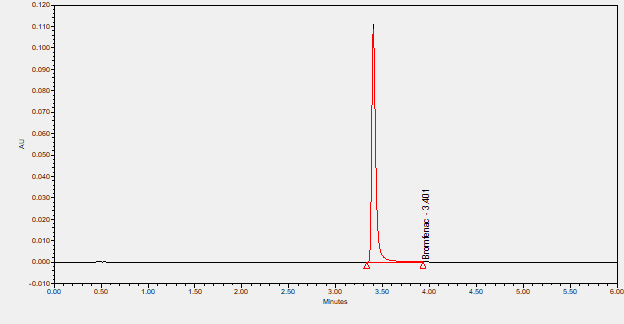
Bumetanide is a loop diuretic used to treat swelling and fluid retention (edema) caused by congestive heart failure, liver disease, and kidney disease. It works by causing the kidneys to get rid of unneeded water and salt from the body through the urine.*
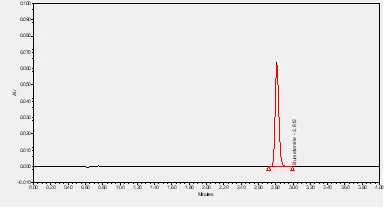

Bupivacaine is a potent local anesthetic with unique characteristics from the amide group of local anesthetics. Local anesthetics are used in regional anesthesia, epidural anesthesia, spinal anesthesia, and local infiltration. Local anesthetics generally block the generation of the action potential in nerve cells by increasing the threshold for electrical excitation.**
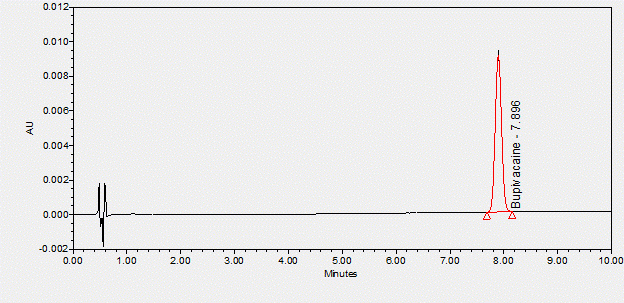
Butorphanol is an opioid agonist-antagonist used to treat moderate to severe pain.****
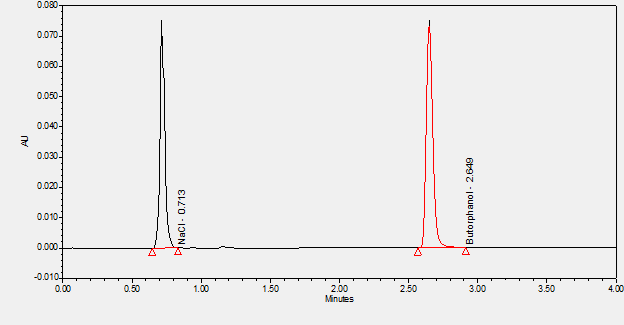
Calcium chloride is an inorganic compound, a salt with the chemical formula CaCl2. It is a white crystalline solid at room temperature, and it is highly soluble in water. It can be created by neutralising hydrochloric acid with calcium hydroxide.*

Calcium gluconate is a medication used to manage hypocalcemia, cardiac arrest, and cardiotoxicity due to hyperkalemia or hypermagnesemia. It is classified as a calcium salt. This activity outlines the indications, action, and contraindications for calcium gluconate as a valuable agent in managing hypocalcemia, cardiac arrest, cardiotoxicity due to hyperkalemia or hypermagnesemia, and other disorders as applicable. This activity will highlight the mechanism of action, adverse events, and other key factors (e.g., off-label uses, dosing, pharmacodynamics, monitoring, relevant interactions). **
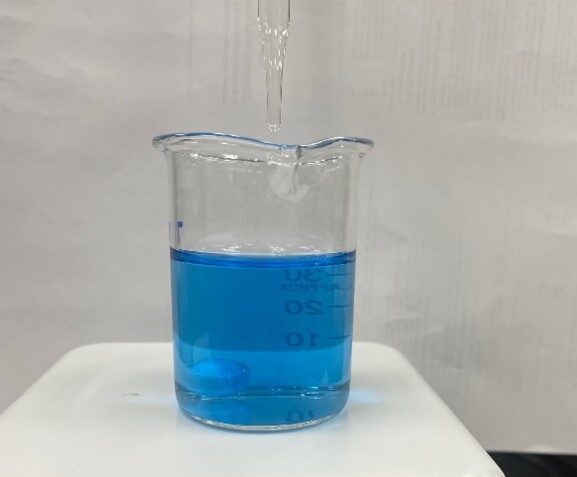
Cantharidin is a naturally occurring odorless, colorless fatty substance of the terpenoid class that is produced as an oral fluid in the alimentary canal of the male blister beetle 1,2. For its natural purpose, the male blister beetle secretes and presents the cantharidin to a female beetle as a copulatory gift during mating. Post-copulation, the female beetle places the cantharidin over her eggs as protection against any potential predators.
Available synthetically since the 1950s, topical applications of cantharidin have been used predominantly as a treatment for cutaneous warts since that time 1,2. In 1962 however, marketers of cantharidin failed to produce sufficient efficacy data, resulting in the FDA revision of approval of cantharidin.****
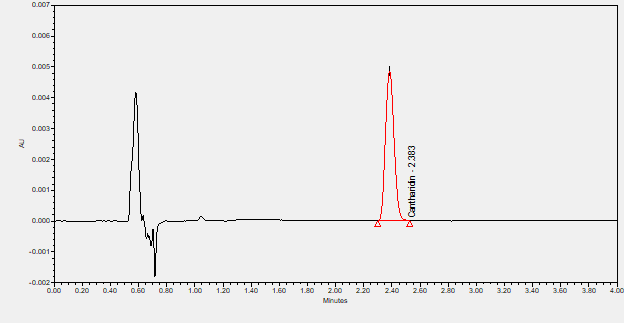
Cefazolin is a beta-lactam antibiotic and first-generation cephalosporin with bactericidal activity. Cefazolin binds to and inactivates penicillin-binding proteins (PBP) located on the inner membrane of the bacterial cell wall. Inactivation of PBPs interferes with the cross-linkage of peptidoglycan chains necessary for bacterial cell wall strength and rigidity. This results in the weakening of the bacterial cell wall and causes cell lysis.***
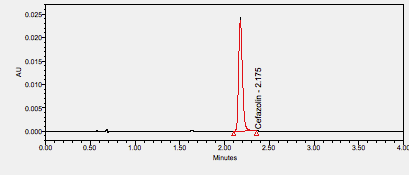
Ceftazidime is an injected broad-spectrum third-generation cephalosporin beta-lactam antibiotic used to treat or prevent a variety of bacterial infections, including pneumonia, gynecological infections, bone and joint infections, and septicemia, among others.****
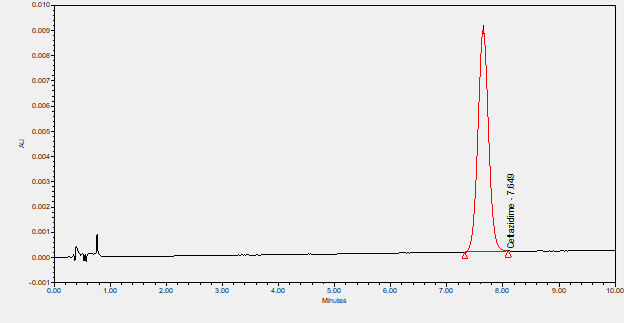
Ceftriaxone is a broad-spectrum cephalosporin antibiotic used for the treatment of bacterial infections in various locations, such as in the respiratory tract, skin, soft tissue, and urinary tract.****
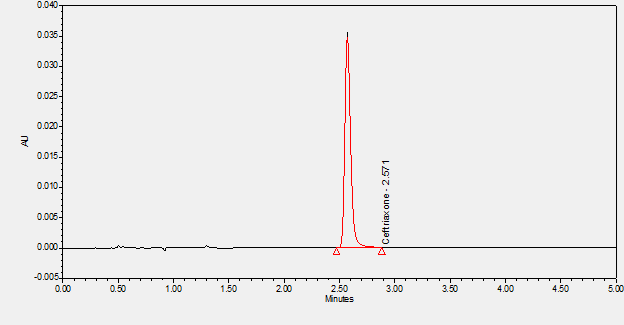
Cefuroxime is a cephalosporin indicated for the treatment of a variety of infections including acute bacterial otitis media, several upper respiratory tract infections, skin infections, urinary tract infections, gonorrhea, early Lyme disease, and impetigo.****
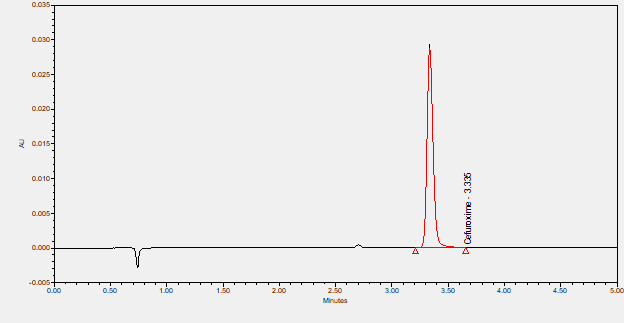
Cisatracurium besylate is an intermediate-acting, non-depolarizing neuromuscular blocking drug (NMBD). Cisatracurium has a benzylisoquinolinium structure and is the 1R cis-1-prime R cis isomer of atracurium. As an NMBD, it has found use as an adjunct to general anesthesia facilitating tracheal intubation and providing skeletal muscle relaxation during surgery. It may also be used to provide skeletal muscle relaxation to facilitate mechanical ventilation in an intensive care unit setting, but must be used with sedation. **
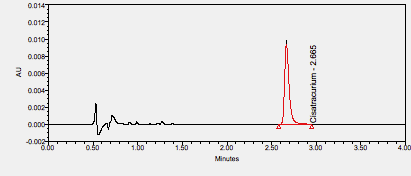
Citrate is a buffering excipient often used in injectable formations.

Clonidine is an antihypertensive medication that acts on alpha-adrenergic and imidazoline receptor agonists. Clonidine is an antihypertensive drug that lowers blood pressure and heart rate by relaxing the arteries and increasing the blood supply to the heart; it has other FDA-approved indications such as treatment of attention deficit hyperactivity disorder (ADHD) in children (FDA approval 2010); management of tics commonly found with Tourette syndrome; and adjunct therapy for severing cancer-related pain.**
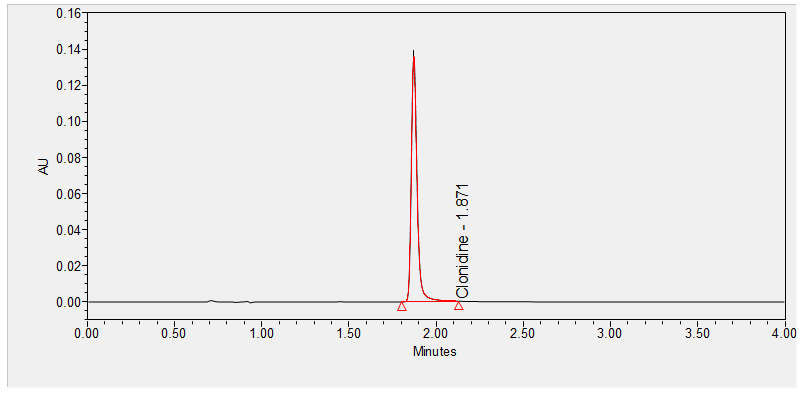
Cyanocobalamin is a man-made form of vitamin B12 used to treat and prevent vitamin B12 deficiency. It is essential for the health of blood cells and nerves and plays a critical role in DNA synthesis.*
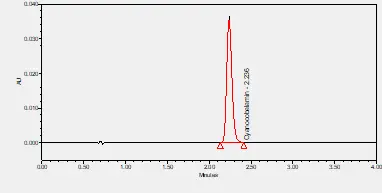
Cyclopentolate is a muscarinic antagonist. It is commonly used as an eye drop during pediatric eye examinations to dilate the eye (mydriatic) and prevent the eye from focusing/accommodating (cycloplegic). Cyclopentolate or atropine can also be administered to reverse muscarinic and central nervous system effects of indirect cholinomimetic (anti-AChase) administration.***
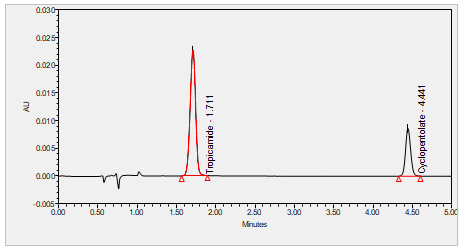
Cyclosporine is an immunosuppressive medication used to prevent organ rejection in transplant patients and to treat certain autoimmune diseases. It works by decreasing the activity of the immune system to prevent it from attacking the transplanted organ or its own tissues.*
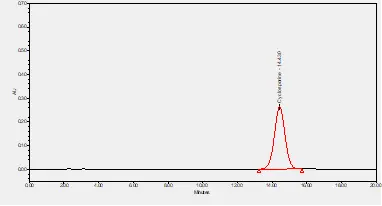
Deferoxamine is a medication used to remove excess iron from the body, often in patients who have received multiple blood transfusions. It binds to the iron in the blood and allows it to be excreted in the urine.*
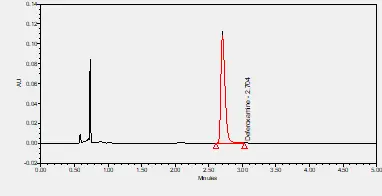
Demecarium is an indirect-acting parasympathomimetic agent that is used to treat glaucoma. It is a cholinesterase inhibitor or an anticholinesterase. Cholinesterase inhibitors prolong the effect of acetylcholine, which is released at the neuroeffector junction of parasympathetic postganglion nerves, by inactivating the cholinesterases that break it down. Demecarium inactivates both pseudocholinesterase and acetylcholinesterase. In the eye, this causes constriction of the iris sphincter muscle (causing miosis) and the ciliary muscle. The outflow of the aqueous humor is facilitated, which leads to a reduction in intraocular pressure. ****

Desmopressin is a drug that acts on the vasopressin receptors of the body. It has many relevant clinical uses, ranging from nocturnal enuresis to hemophilia. While this drug is relatively safe to use, there are certain side effects to be kept in mind for patients receiving the drug, as well as specific contraindications that limit the population that can receive desmopressin. **
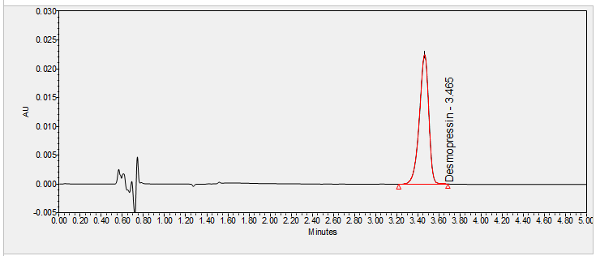
Dexmedetomidine, sold under the trade name Precedex among others, is a medication used for sedation. It is also used to treat acute agitation associated with schizophrenia or bipolar I or II disorder.
Similar to clonidine, it is a sympatholytic drug that acts as an agonist of α2-adrenergic receptors in certain parts of the brain. Veterinarians use dexmedetomidine for similar purposes in treating cats, dogs, and horses. It was developed by Orion Pharma.***
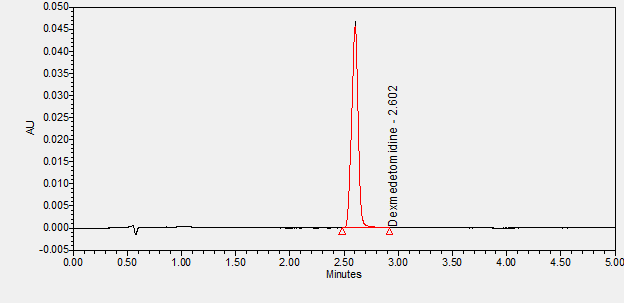
Dexamethasone Sodium Phosphate is a sodium phosphate salt form of Dexamethasone, a synthetic adrenal corticosteroid with potent anti-inflammatory properties. In addition to binding to specific nuclear steroid receptors, dexamethasone also interferes with NF-kB activation and apoptotic pathways. This agent lacks the salt-retaining properties of other related adrenal hormones. (NCI04)**
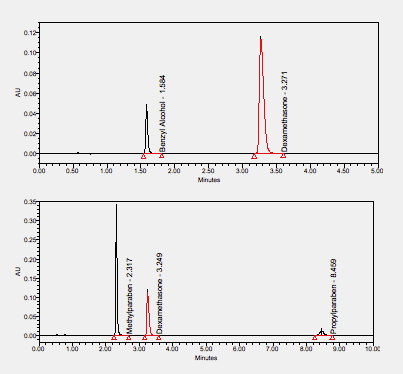
Diltiazem is a benzothiazepine derivative with antihypertensive and vasodilating properties. Approved in 1982 by the FDA, it is a member of the non-dihydropyridine calcium channel blockers drug class. It works through various mechanisms of action, but it primarily works by inhibiting the calcium influx into cardiac and vascular smooth muscle during depolarization.12 Compared to dihydropyridine drugs, such as nifedipine, that preferentially act on vascular smooth muscle and verapamil that directly acts on the heart muscle, diltiazem displays an intermediate specificity to target both the cardiac and vascular smooth muscle.8 Being a potent vasodilator, diltiazem is used clinically as an antihypertensive, anti-arrhythmic, and as an anti-anginal agent 9 for the management of cardiovascular conditions such as hypertension, chronic stable angina, atrial fibrillation, atrial flutter. Apart from its main FDA-approved indications, diltiazem has also been used for numerous off-label indications, such as anal fissures (in topical formulations), migraine prophylaxis, pulmonary hypertension, and rest-related cramps in the lower extremities.9 Typically available in extended-release oral and intravenous formulations, diltiazem is marketed under various brand names with Cardizem and Tiazac being the most common ones. ***
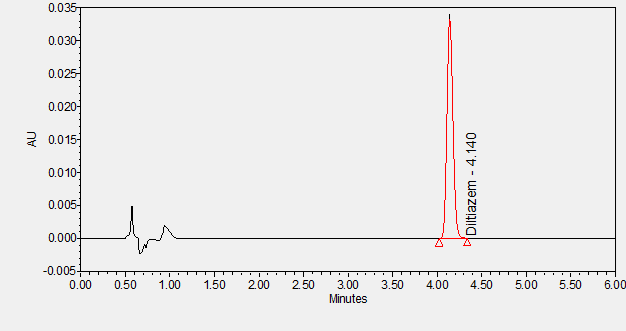
The FDA approveD dobutamine for short-term use in patients with decreased contractility due to heart failure or cardiac surgical procedures leading to cardiac decompensation. The agent has not been shown to give positive outcomes in the hospitalized or outpatient setting for heart failure patients despite hemodynamically improving the patient's condition. Dobutamine can be used as temporary intravenous inotropic support until resolution of the acute inducing factors or the patient receives more definitive treatment, such as coronary revascularization, mechanical circulatory support, or heart transplant. Short-term intravenous inotropic support should be given to patients in cardiogenic shock to preserve systemic blood flow and protect from end-organ damage. **
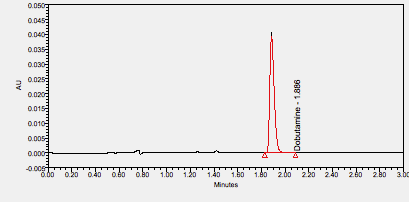
Dopamine (DA, a contraction of 3,4-dihydroxyphenethylamine) is a neuromodulatory molecule that plays several important roles in cells. It is an organic chemical of the catecholamine and phenethylamine families. Dopamine constitutes about 80% of the catecholamine content in the brain. It is an amine synthesized by removing a carboxyl group from a molecule of its precursor chemical, L-DOPA, which is synthesized in the brain and kidneys. Dopamine is also synthesized in plants and most animals.***
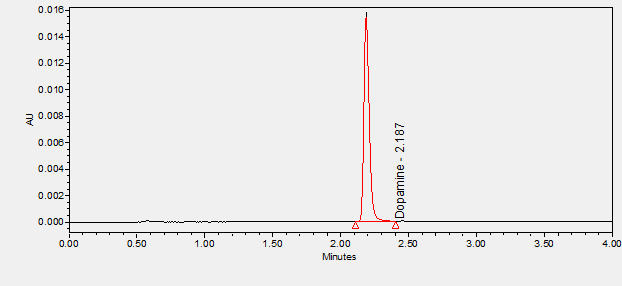
EDTA (Ethylenediaminetetraacetic acid) is a molecule used in various medical and analytical applications to bind metal ions. It is often used to treat lead poisoning and in blood tests to prevent blood samples from clotting.*
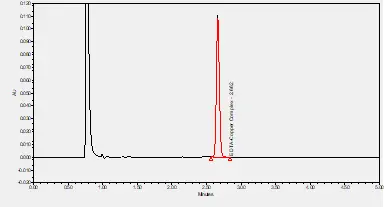
Edetate disodium (EDTA) is a chelating agent. A chelating agent is capable of removing a heavy metal, such as lead or mercury, from the blood. EDTA is also used to lower blood levels of calcium when they have become dangerously high.
EDTA can also used to control heart rhythm disturbances caused by a heart medication called digitalis (digoxin, Lanoxin).
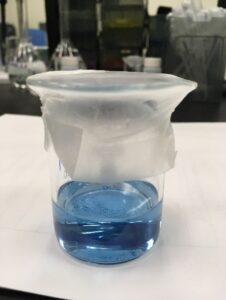
Ephedrine is a central nervous system (CNS) stimulant that is often used to prevent low blood pressure during anesthesia. It has also been used for asthma, narcolepsy, and obesity but is not the preferred treatment. It is of unclear benefit in nasal congestion. It can be taken by mouth or by injection into a muscle, vein, or just under the skin. Onset with intravenous use is fast, while injection into a muscle can take 20 minutes, and by mouth can take an hour for effect. When given by injection it lasts about an hour and when taken by mouth it can last up to four hours. ***
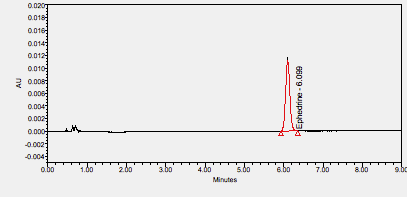
Epinephrine is a hormone and neurotransmitter used to treat allergic reactions, to restore cardiac rhythm, and to control mucosal congestion, glaucoma, and asthma.****
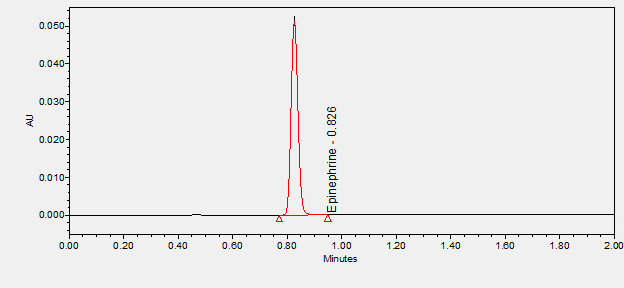
Esmolol is a cardioselective beta-adrenergic blocker used for the short-term control of ventricular rate and heart rate in various types of tachycardia, including perioperative tachycardia and hypertension.****
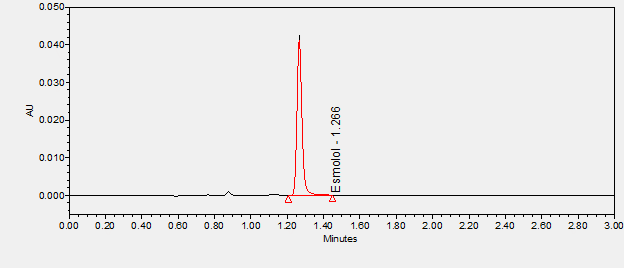
Famotidine is a histamine H2 receptor antagonist used to treat duodenal ulcers, benign gastric ulcers, GERD, and Zollinger-Ellison syndrome.****

Fentanyl is an opioid analgesic used in anesthesia, for breakthrough cancer pain, or round the clock pain management.****
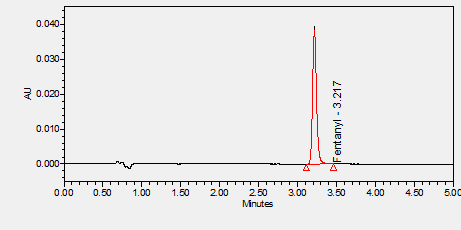
Bupivacaine is a local anesthetic used in a wide variety of superficial and invasive procedures.****
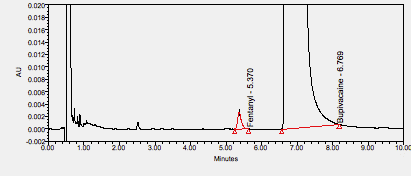
Ropivacaine is an amide-type local anesthetic used for local or regional anesthesia during surgery and for short-term management of acute pain.****
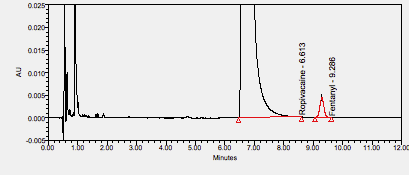
Fluorescein is a dye used in diagnostic procedures to highlight structures in the body. It is often used in ophthalmology to detect corneal abrasions and in angiography to visualize blood vessels in the retina.*
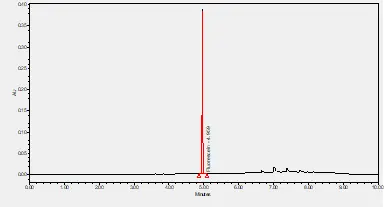
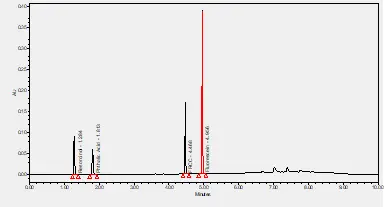
Foscarnet is an antiviral medication used to treat cytomegalovirus (CMV) infections in patients with AIDS and herpes simplex virus (HSV) infections that are resistant to acyclovir. It works by inhibiting viral DNA polymerase.*
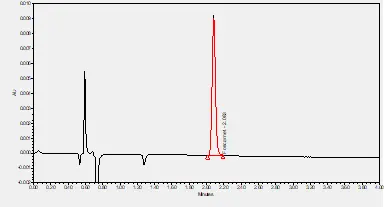
Furosemide is a loop diuretic used to treat hypertension and edema in congestive heart failure, liver cirrhosis, renal disease, and hypertension.****

Gentamicin is an aminoglycoside used to treat a wide variety of aerobic infections in the body.****
Glycopyrronium is an anticholinergic agent used to treat hyperhidrosis, severe drooling, COPD, used with other medications to treat ulcers, and used in anesthesia.****
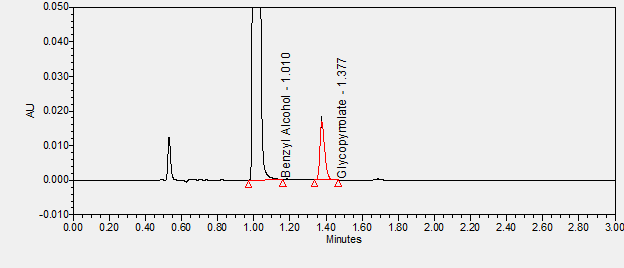
Granisetron is a 5HT3 antagonist used to treat nausea and vomiting in cancer therapy and postoperatively.****

Haloperidol lactate is an antipsychotic medication used to treat schizophrenia, acute psychosis, and Tourette's syndrome. It works by blocking dopamine receptors in the brain, which helps to reduce psychotic symptoms.*
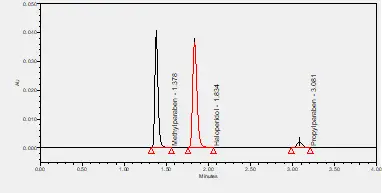
Heparin is an anticoagulant indicated for thromboprophylaxis and to treat thrombosis associated with a variety of conditions such as pulmonary embolism and atrial fibrillation.****
Hydromorphone is a medication used in the management and treatment of moderate to severe acute pain as well as severe chronic pain. It is in the opioid class of medications. **
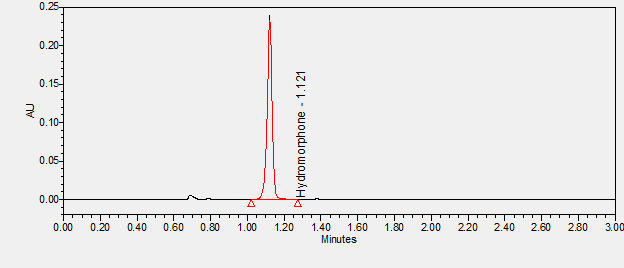
Iohexol is a contrast agent for intrathecal administration used in myelography and contrast enhancement for computerized tomography.****
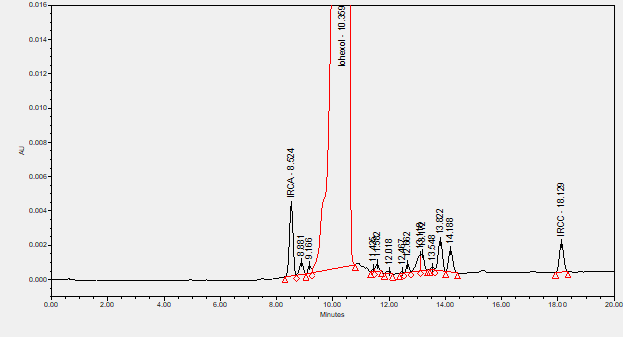
Isoprenaline is a catecholamine non-selective beta-adrenergic agonist typically used to treat bradycardia and heart block. ****

Ketamine is a rapid-acting general anesthetic and NMDA receptor antagonist used for induction of anesthesia diagnostic and surgical procedures typically in combination with a muscle relaxant.****
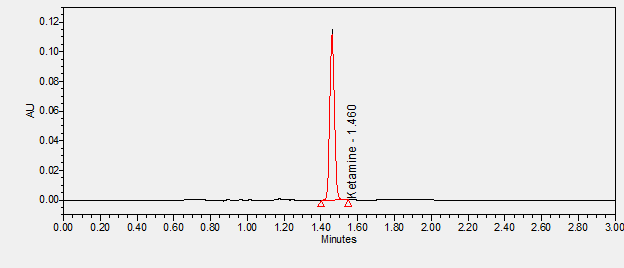
Ketorolac is an NSAID used to treat moderate to severe pain, rheumatoid arthritis, osteoarthritis, ankylosing spondylitis, menstrual disorders, and headaches.****
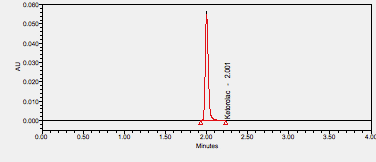
Labetalol is an alpha and beta adrenergic antagonist used to treat hypertension, angina, and sympathetic overactivity syndrome.****
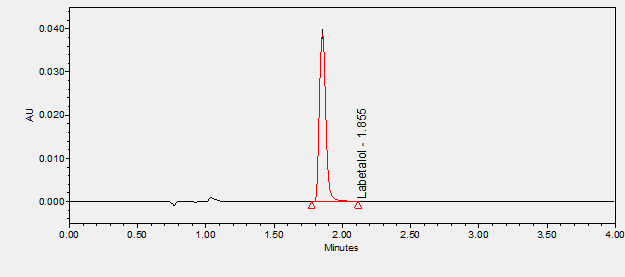
Leuprolide is a medication used to treat hormone-sensitive cancers such as prostate cancer and conditions like endometriosis. It works by decreasing the amount of certain hormones in the body.*
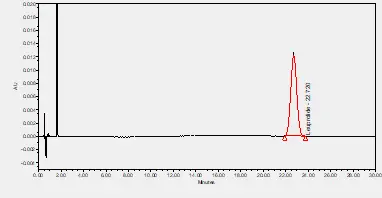
Oxymetazoline is an alpha-1A adrenoceptor agonist used to treat nasal congestion, allergic reactions of the eye, and facial erythema associated with rosacea.****
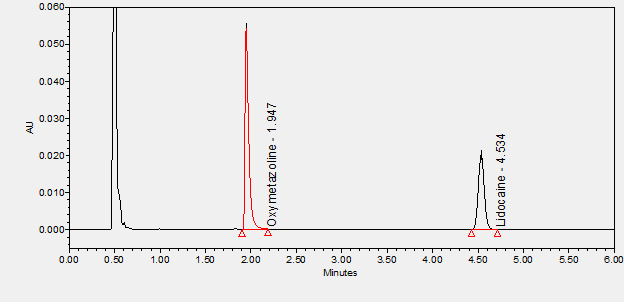
Lidocaine is a local anesthetic used in a wide variety of superficial and invasive procedures.****
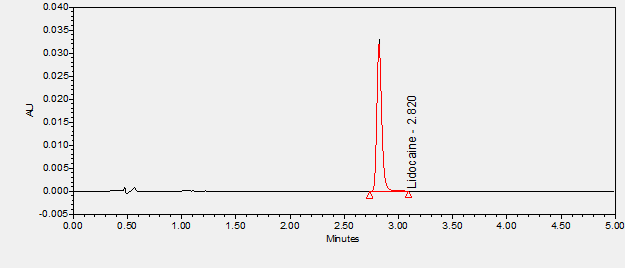
Lorazepam is a short-acting benzodiazepine commonly used to treat panic disorders, severe anxiety, and seizures.****
